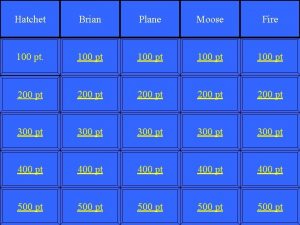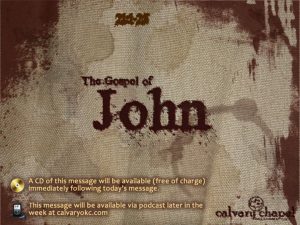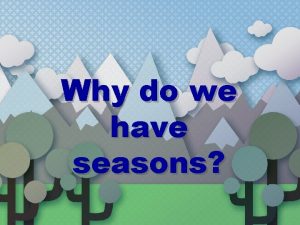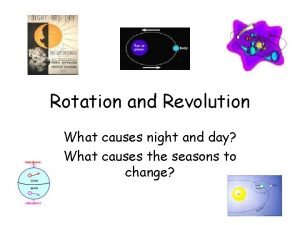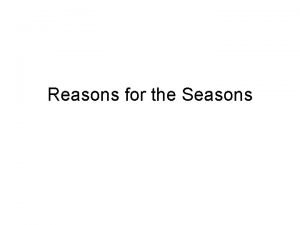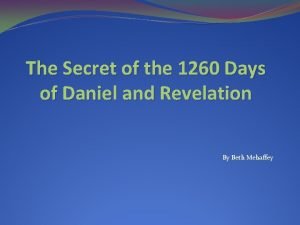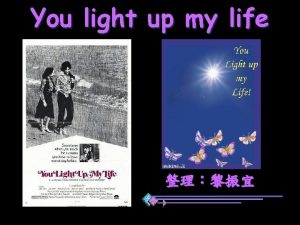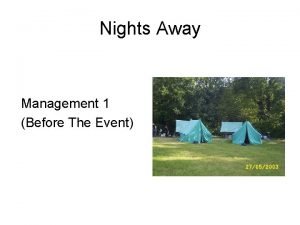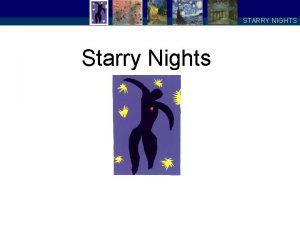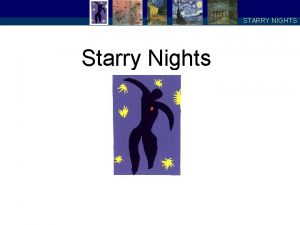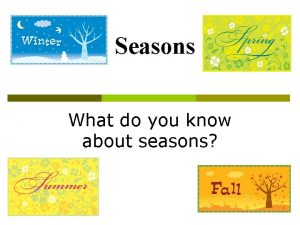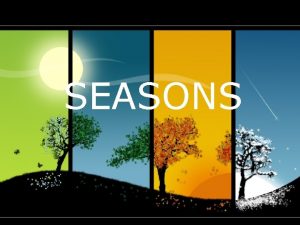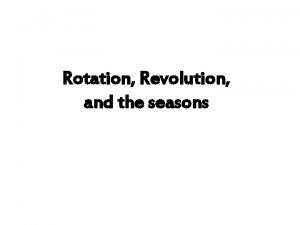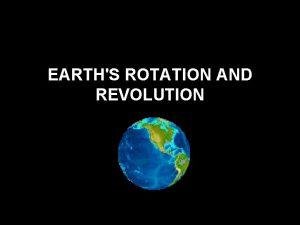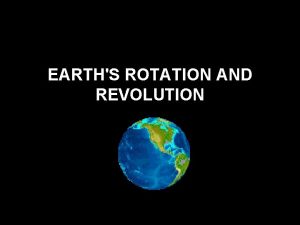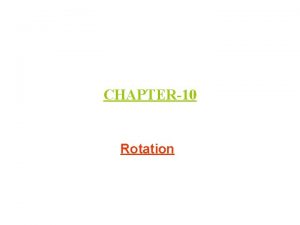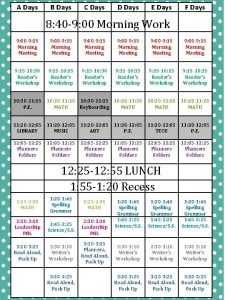Days Years Seasons Days and Nights Rotation the
















- Slides: 16

Days, Years & Seasons

Days and Nights Rotation: the Earth turns around on its axis 1 day=24 hours (one rotation) One half of the Earth is always in light and one half is always in darkness List some examples of rotation…

Years Revolution: the Earth moves around the sun 1 year=365 1/4 days (one revolution) List some examples of revolutions…





What REALLY causes the seasons? The Earth is tilted as it revolves around the sun.

Seasons (summer, fall, winter, spring) The Earth’s axis is tilted 23 1/2 degrees from vertical The tilt is always oriented the same way and causes the four seasons The 23 1/2 degree tilt causes the sunlight to follow a different path across the Earth’s surface

Summer Solstice: June 21 The Earth’s Northern Hemisphere is tilted towards the sun

Summer Solstice More direct energy (heat) enters the atmosphere There is 24 hours of daylight at the North Pole and 24 hours of darkness at the South Pole The longest day of the year Aphelion: the Earth is the farthest from the sun (94 million miles)

Winter Solstice: December 21 The Earth’s Northern Hemisphere is tilted away from the sun

Winter Solstice The sun’s energy (heat) is more concentrated in the Southern Hemisphere There is 24 hours of daylight at the South Pole and 24 hours of darkness at the North Pole The shortest day of the year Perihelion: the Earth is the closest to the sun (91 million miles)

What happens when the Earth is not tilted toward or away from the sun? HERE And… HERE

Equinox The Earth is not tilted toward or away from the sun Spring Equinox: March 21 Fall Equinox: September 21 There are 12 hours of daylight and 12 hours of darkness from the North Pole to the South Pole The distance between the sun and the Northern and Southern Hemispheres of Earth are equal!

Seasons Animations http: //www 1. teachertube. com/view. Video. php? title=What_Causes_Seasons_on_ Earth&video_id=657 http: //esminfo. prenhall. com/science/geo animations/01_Earth. Sun_E 2. html
 Tis all a checkerboard of nights and days
Tis all a checkerboard of nights and days Fool birds from hatchet
Fool birds from hatchet I fled him
I fled him Why do we have seasons
Why do we have seasons What causes night and day? *
What causes night and day? * True or false questions about seasons
True or false questions about seasons Optical rotation formula
Optical rotation formula Four score and twenty years ago
Four score and twenty years ago Days pass and the years vanish
Days pass and the years vanish Goat years to human years
Goat years to human years 300 solar years to lunar years
300 solar years to lunar years 1260 days from today
1260 days from today Umm kulthum: a voice like egypt
Umm kulthum: a voice like egypt Neverwinter nights editor
Neverwinter nights editor So many nights i dream of you
So many nights i dream of you Symbols in a midsummer night's dream
Symbols in a midsummer night's dream Nights away permit checklist
Nights away permit checklist

